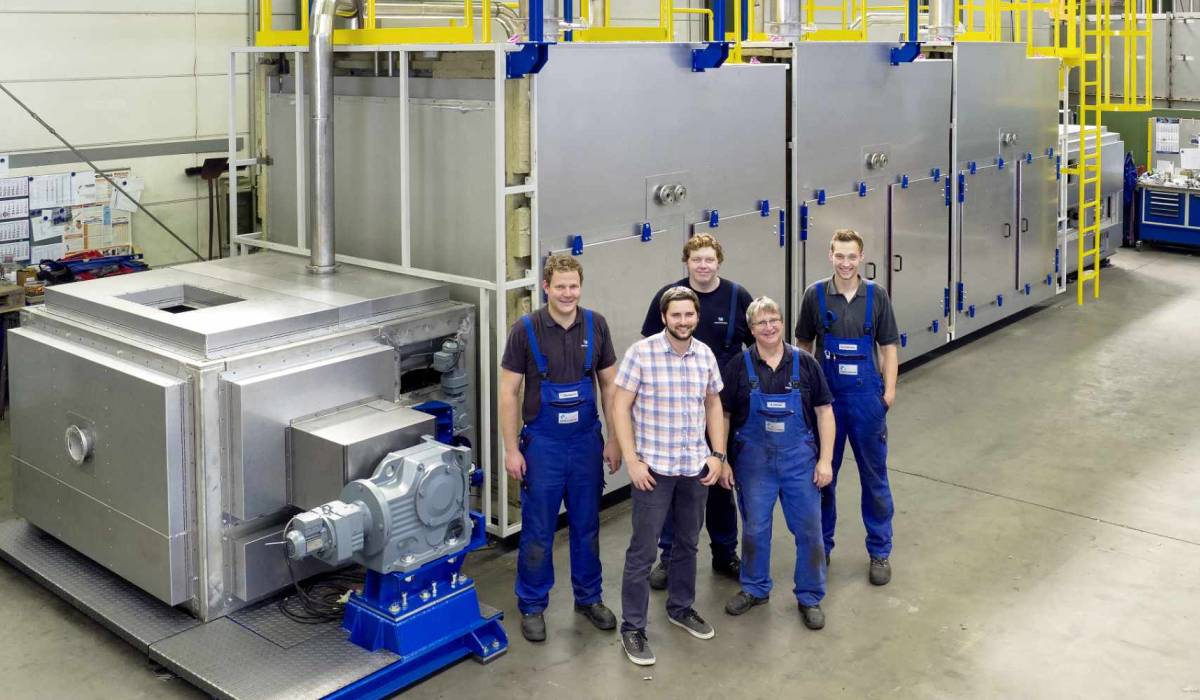A current project in the field of bulk material drying offers us the opportunity to describe important technical principles that are necessary for the design of a dryer in detail.
The following descriptions are the result of extensive discussions with the customer and empirical tests on the bulk material to be dried. The technical solutions and the implementation show very well on which basis the dimensioning of such a dryer is done and which parameters are required for it.
Design of the dryer
Essentially, the dryer consists of 3 zones each just under 3 meters in length. The width of the conveyor belt is about 1.5 meters. The dimensions are important, as a uniform air and temperature distribution within a zone is guaranteed. On the other hand, the outer dimensions allow the incorporation into the existing building. An assembly is possible in a short time, since the housing is delivered fully assembled and welded and the zones only need to be connected on site.
Technology, technology, technology
In each zone there is a recirculation fan to circulate the dryer atmosphere and to secure the flow through the product. The heating is realized via a flue gas heat exchanger, which is arranged on the pressure side of the circulating air fan. Due to the pressure-side flow, a uniform heat dissipation over the entire heat exchanger is possible with air baffles. The flue gas heat exchangers are heated in each case with a gas blower burner, which is mounted directly on the neck of the heat exchanger. Each burner is preceded by a gas pressure control system.
Fresh air and exhaust air dampers in each zone are used to mix the dryer atmosphere so that saturation of the circulating air is avoided. The fresh air is sucked in freely by the recirculation fan via the fresh air pipe which is arranged on the suction side. The exhaust ports in the zones are arranged downstream of the product in the direction of airflow and connected to a manifold.
Through the dryer
The conveying of the product is done via a woven belt which is driven via the outlet side drive station and held on the inlet side tensioning station to tension. A cleaning brush prevents caking of the product on the belt.
The loading of the product is realized via a swivel conveyor belt with attached bunker. This swivel conveyor unit is completely enclosed in the dryer, so that there is no dust load outside the dryer. Also enclosed is the outlet side of the dryer. Here, the product is transported over several inclined plates, which act as a slide, gently to the transfer point, without being exposed to high fall paths.
A scraper conveyor is used to discharge the product through to the bottom of the dryer. The conveyor scrapes with cross sheets, which are attached to a chain, over an intermediate floor, which is arranged between lower and upper run. The resulting dust is conveyed on the outlet side by means of a screw laterally from the dryer housing.


